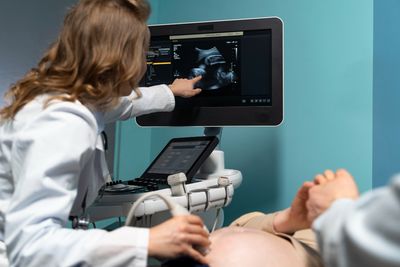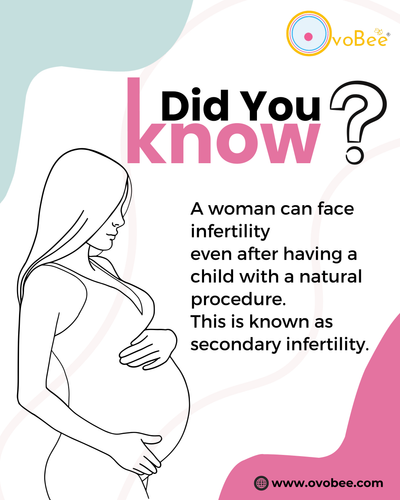How technology is changing Female Health- emerging role of Femtech
Femtech (female technology) is an area of the medical industry gaining prominence for its potential to reduce the gender health gap. As of 2023, this global technology was worth over USD 31 billion; a figure that’s set to increase at a rate of 16.3 per cent CAGR between 2024 and 2030.
One of the key drivers of femtech is the need for better reproductive health services. From more accurate diagnoses to assistive reproductive technology (ART), fertility technology is imperative for improving women’s healthcare. But what exactly is fertility tech and how is it transforming the medical landscape?
Growing Rates of Infertility
Over the past fifty years, almost every country has seen an overall decline in fertility. From South Korea’s low birth rate of 0.78 (expected to further decrease to 0.65 in 2025) to the 7 per cent drop in the number of births in France between 2022 and 2023, the statistics show that women worldwide have fewer children.
This isn’t always due to infertility, though. Greater access to contraception worldwide (including the rise of contraception clinics, like GynaeDoctors in the UK, and online directories, like FPA Women’s Health in the US) and better education are empowering women to ake more informed decisions around having children.
However, it’s also acknowledged that rising infertility has a large part to play in falling birth rates.
Around 1 in 6 people around the world now experience infertility, which equates to almost 18 per cent of the total adult population.
The rates are similar across high-, middle-, and low-income countries, too, with a clear lack of discrimination when it comes to who struggles with fertility.
As countries continue to struggle with ageing populations, this has given the fertility technology industry a boost, with an increasing need for advanced solutions for women’s reproductive health.
What Is Femtech and Fertility Tech?
The fertility tech that falls under the category of femtech is designed to improve the chances of reproduction for women.
This can include women in heterosexual relationships who struggle to become pregnant, as well as women in non-heterosexual relationships who need medical assistance in order to become pregnant.
Usually, fertility technology involves manipulating eggs, embryos, and sperm to increase the likelihood of successful fertilisation.
However, it can also focus on helping women conceive naturally through advanced women’s healthcare. Fertility tech can be used to diagnose and treat health issues that are affecting the likelihood of conception, for example, improving female health and creating a growing number of options for women with infertility.
Examples of Fertility Technology
To learn about how technology is changing women’s healthcare, we’ve looked at some prominent examples of fertility tech and ART.
Cycle Tracking Technology
Menstrual cycle tracking technology becoming a household staple for women trying to conceive. It’s also useful for those who don’t want to become pregnant or would like to gain a better understanding of their cycle and fertility. The technology works by monitoring
temperature throughout the month. A consistent increase in temperature can indicate ovulation, with additional measures (like a luteinizing hormone test) creating better accuracy.
From wearables to bluetooth thermometers, the devices used to record temperatures are often connected to an app. This makes it easy to track and view your menstrual cycle, helping women gain a better understanding of their fluctuating fertility.
In Vitro Fertilisation
In vitro fertilisation (IVF) has transformed women’s reproductive healthcare. By utilising technology like ultrasounds, co-incubation, and preimplantation genetic testing (PGT), women who struggle to conceive naturally can still have a healthy pregnancy.
Most emerging technologies in the field of IVF are designed to increase the success rate of the procedure. By doing so, women are less likely to have to repeat IVF multiple times, reducing the risk of painful side effects and creating an easier path to pregnancy.
Oocyte Cryopreservation
Oocyte cryopreservation is the technology behind egg freezing. Not only does this give women greater control over when they’ll have children, but it also allows them to put their own health first. For example, if a woman is hesitant to undergo chemotherapy because of
the potential infertility risks, oocyte cryopreservation provides an alternative option.
Intrauterine Insemination
Intrauterine insemination (IUI) is a form of fertility technology that can help women with cervical issues and endometriosis who want to conceive. The process works by identifying ovulation and removing slow-moving or abnormal sperm from the sample. The remaining
sperm is then injected straight into the uterus, bypassing the cervix completely to increase the chances of pregnancy.
Laser-Assisted Hatching
Laser-assisted hatching is a technique used to thin the outer shell of the embryo by making a small hole. The aim is to improve the chances of implantation, making conception more likely for older women or those with frequent implantation failure.
It’s important to note, though, that this is a new technology that’s still being studied, so its effectiveness in treating infertility is inconclusive.
Looking to the Future of Fertility Tech Femtech is a rapidly growing industry that’s transforming the world of women’s healthcare.
In the future, it’s expected that there’ll be a continued focus on how technology can treat reproductive issues that have previously garnered little attention from the medical community (like endometriosis).
New technologies are likely to emerge, with an increase in convenient healthcare that puts women in charge of their fertility. This includes a rise in wearable technology, apps, and minimally invasive procedures.
Artificial intelligence (AI) is also highly anticipated to become a future feature of women’s fertility treatment. It has a wide range of proposed capabilities, including:
Selecting the healthiest embryos
Analysing live sperm samples
Predicting developmental potential
Helping women track their menstrual cycles
Offering personalised fertility advice via easy-to-access phone applications
Identifying health risks in pregnant women
To show the potential of AI in improving fertility, one study looked at how it can identify healthy embryos. The scientists trained an AI programme with about 50,000 images of embryos of varying quality. Using this information, the AI software was then able to go on and identify the best quality embryos with an accuracy level of 97 per cent.







